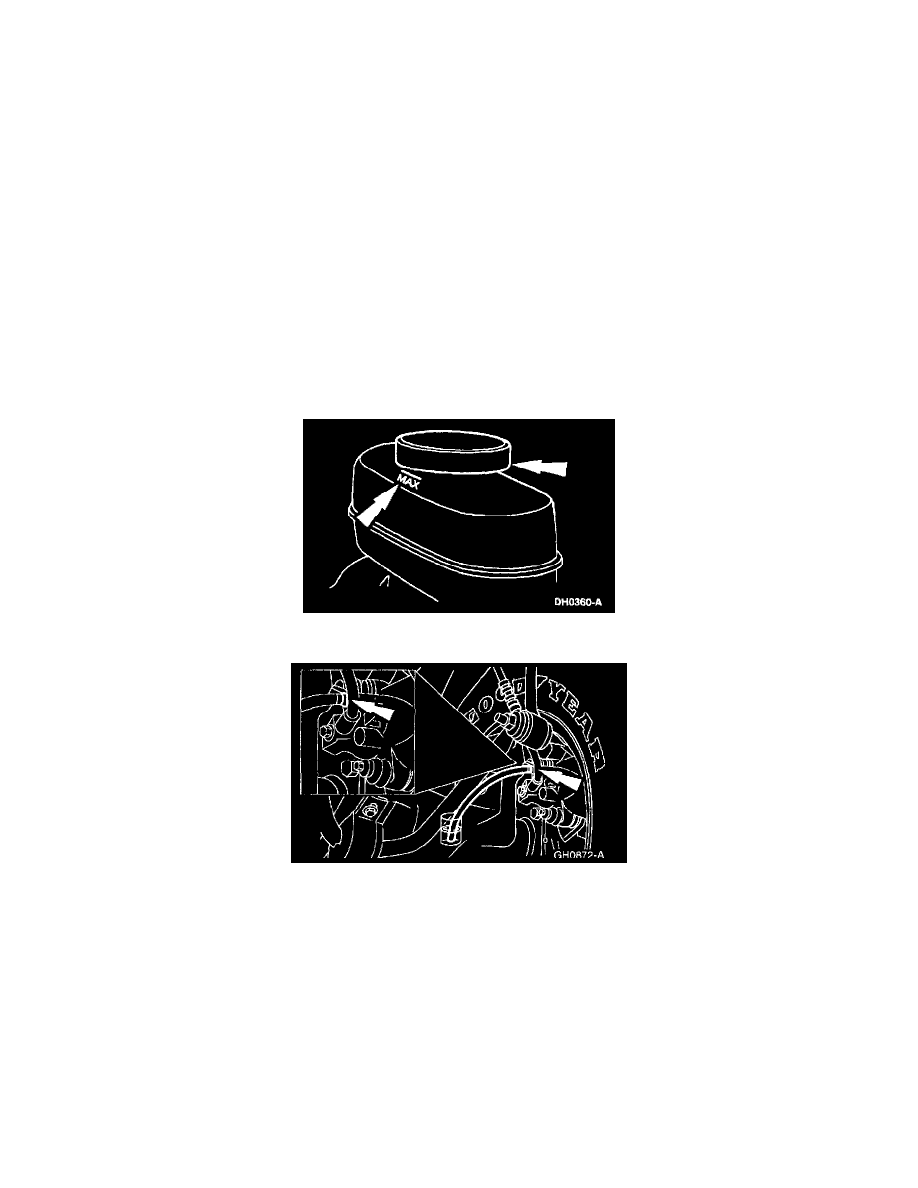Explorer 4WD V8-4.6L VIN W (2002)

Brake Bleeding: Service and Repair
Four Wheel ABS Hydraulic Control Unit (HCU)
Four Wheel Anti-Lock Brake System (4WABS) Hydraulic Control Unit (HCU)
WARNING: Use of any other than approved DOT 3 brake fluid will cause permanent damage to brake components and will render the
brakes inoperative.
WARNING: Brake fluid contains polyglycol ethers and polyglycols. Avoid contact with eyes. Wash hands thoroughly after handling. If
brake fluid contacts eyes, flush eyes with running water for 15 minutes. Get medical attention if irritation persists. If taken internally, drink
water to induce vomiting. Get medical attention immediately.
CAUTION: Brake fluid is harmful to painted or plastic surfaces. If brake fluid is spilled onto a painted or plastic surface, immediately wash it with
water.
CAUTION: Do not allow the brake master cylinder reservoir to run dry during the bleeding operation. Keep the brake master cylinder reservoir filled
with the specified brake fluid. Never reuse the brake fluid that has been drained from the hydraulic system.
NOTE: This procedure only needs to be carried out if a new 4-wheel anti-lock brake (4WABS) hydraulic control unit (HCU) has been installed.
1. Connect the scan tool DCL cable adapter into the vehicle data link connector (DLC) under the dash, and follow the scan tool instructions for
bleeding.
2. Clean all dirt from and remove the brake master cylinder filler cap, and fill the brake master cylinder reservoir with the specified brake fluid.
3. NOTE: Disc brake is shown, drum brake is similar.
Connect a clear drain tube to the RH rear bleeder screw and the other end in a container partially filled with recommended brake fluid.
4. Have an assistant pump the brake pedal and then hold firm pressure on the brake pedal.
